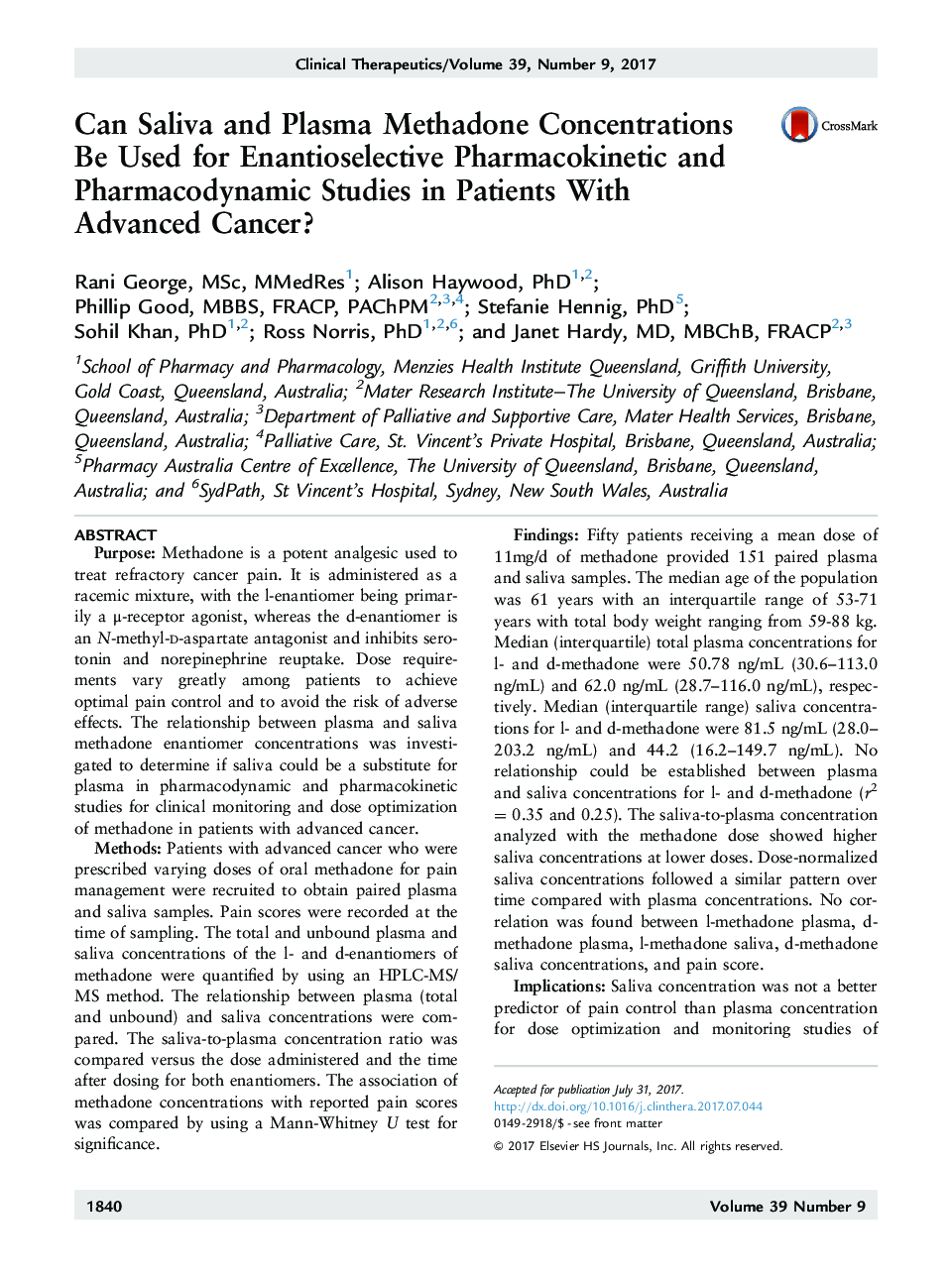| کد مقاله | کد نشریه | سال انتشار | مقاله انگلیسی | نسخه تمام متن |
|---|---|---|---|---|
| 5553698 | 1558085 | 2017 | 9 صفحه PDF | دانلود رایگان |
PurposeMethadone is a potent analgesic used to treat refractory cancer pain. It is administered as a racemic mixture, with the l-enantiomer being primarily a μ-receptor agonist, whereas the d-enantiomer is an N-methyl-d-aspartate antagonist and inhibits serotonin and norepinephrine reuptake. Dose requirements vary greatly among patients to achieve optimal pain control and to avoid the risk of adverse effects. The relationship between plasma and saliva methadone enantiomer concentrations was investigated to determine if saliva could be a substitute for plasma in pharmacodynamic and pharmacokinetic studies for clinical monitoring and dose optimization of methadone in patients with advanced cancer.MethodsPatients with advanced cancer who were prescribed varying doses of oral methadone for pain management were recruited to obtain paired plasma and saliva samples. Pain scores were recorded at the time of sampling. The total and unbound plasma and saliva concentrations of the l- and d-enantiomers of methadone were quantified by using an HPLC-MS/MS method. The relationship between plasma (total and unbound) and saliva concentrations were compared. The saliva-to-plasma concentration ratio was compared versus the dose administered and the time after dosing for both enantiomers. The association of methadone concentrations with reported pain scores was compared by using a Mann-Whitney U test for significance.FindingsFifty patients receiving a mean dose of 11mg/d of methadone provided 151 paired plasma and saliva samples. The median age of the population was 61 years with an interquartile range of 53-71 years with total body weight ranging from 59-88 kg. Median (interquartile) total plasma concentrations for l- and d-methadone were 50.78 ng/mL (30.6-113.0 ng/mL) and 62.0 ng/mL (28.7-116.0 ng/mL), respectively. Median (interquartile range) saliva concentrations for l- and d-methadone were 81.5 ng/mL (28.0-203.2 ng/mL) and 44.2 (16.2-149.7 ng/mL). No relationship could be established between plasma and saliva concentrations for l- and d-methadone (r2 = 0.35 and 0.25). The saliva-to-plasma concentration analyzed with the methadone dose showed higher saliva concentrations at lower doses. Dose-normalized saliva concentrations followed a similar pattern over time compared with plasma concentrations. No correlation was found between l-methadone plasma, d-methadone plasma, l-methadone saliva, d-methadone saliva concentrations, and pain score.ImplicationsSaliva concentration was not a better predictor of pain control than plasma concentration for dose optimization and monitoring studies of methadone in patients with cancer. Although the saliva-to-plasma ratio of the concentration of methadone enantiomers was stable across the dosing range, due to the variability in individual saliva-to-plasma ratios, saliva sampling may not be a valid substitute in pharmacokinetic studies of methadone in cancer.
Journal: Clinical Therapeutics - Volume 39, Issue 9, September 2017, Pages 1840-1848
